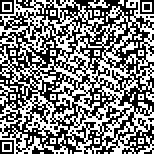| 本文已被:浏览 538次 下载 1870次 |

码上扫一扫! |
|
|
| 基于板蓝根及其混伪品叶绿体基因组的mini-barcode开发及其定性能力的研究 |
|
郭华1,2, 徐流巍1,2, 邢志美1,2, 杨霞1,2, 田晓轩1,2
|
|
1.天津中医药大学, 组分中药国家重点实验室, 天津 301617;2.现代中医药海河实验室, 天津 301617
|
|
| 摘要: |
| [目的] 基于板蓝根及其混伪品的叶绿体基因组序列开发mini-barcode并验证其鉴定能力,为板蓝根的质量控制和科学评价提供方法。[方法] 从GenBank数据库中下载板蓝根及其混伪品所有已发表的叶绿体基因组序列,导入PhyloSuite v1.2.1软件提取其共有蛋白编码基因并分别对齐,后续使用DnaSP 6软件进行核苷酸多态性分析以筛选出候选DNA mini-barcode区域。通过Geneious软件多序列比对,筛选高变区用于mini-barcode开发。针对候选条形码区域设计引物。采用试剂盒法提取板蓝根药材总DNA分别利用通用ITS2引物和该实验设计引物进行聚合酶链式反应(PCR)和测序。[结果] 基于叶绿体基因组的核苷酸多态性分析结果,选择accD基因作为候选mini-barcode开发区域并设计了扩增引物。通过遗传距离和测序数据分析,该分子标记能被成功扩增并实现鉴定。[结论] 开发了用于鉴定板蓝根及其混伪品的mini-barcode,为实现DNA降解的板蓝根药材及含板蓝根的中药制剂等混合样本的真伪鉴别奠定基础。 |
| 关键词: 板蓝根 叶绿体基因组 引物设计 mini-barcode |
| DOI:10.11656/j.issn.1672-1519.2023.05.21 |
| 分类号:R282 |
| 基金项目: |
|
| Development and identification of mini-barcode based on chloroplast genome of Isatis indigotica and its adulterants |
|
GUO Hua1,2, XU Liuwei1,2, XING Zhimei1,2, YANG Xia1,2, TIAN Xiaoxuan1,2
|
|
1.Tianjin University of Traditional Chinese Medicine, State Key Laboratory of Component-Based Chinese Medicine, Tianjin 301617, China;2.Haihe Laboratory of Modern Chinese Medicine, Tianjin 301617, China
|
| Abstract: |
| [Objective] Based on the of Isatis indigotica and its adulterants, highly variable regions were screened and DNA mini-barcode were developed. The identification ability was verified using the original herbs of Isatis indigotica.[Methods] All published chloroplast genome sequences of Isatis indigotica and its adulterants download from GenBank database were imported into PhyloSuite v1.2.1 software to extract their consensus protein-coding genes, subsequent DnaSP 6 software was used to perform nucleotide polymorphism analysis to screen for candidate DNA mini-barcode regions. Through multi-sequence alignment by Geneious, hypervariable regions were used for the development of mini-barcode and primers design. Polymerase chain reaction(PCR) and sequencing were performed on Isatis indigotica to evaluate the identification ability of the mini-barcode by kit method.[Results] Based on the results of the nucleotide polymorphism analysis of chloroplast genome, a specific DNA mini-barcode was developed in the accD region. By genetic distance calculation and the sequencing data analysis, the results showed that the mini-barcode was successfully amplified and identified.[Conclusion] In this study, mini-barcode was designed to identify Isatis indigotica and its adulterants. The results of genetic distance and sequencing data analysis were used to derive the successful primer that can distinguish Isatis indigotica and its adulterants. This study lays a foundation for the identification of the samples which may have degraded or mixed DNA, such as Chinese patent medicines containing Isatis indigotica. |
| Key words: Isatis indigotica chloroplast genome primer design mini-barcode |
